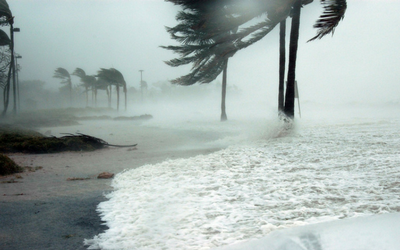
This year has brought severe weather to many parts of the globe. Whether it was forest fires in western North America, hurricanes in the southern United States, heat waves in Europe and the United Kingdom, flooding and landslides in so many parts of the globe, or ice storms in eastern Canada, Mother Nature was not kind to many regions.
These events serve as a reminder that we must be prepared in the face of a natural disaster. Not only is it important to have an emergency plan for yourself and your family, but for your pets as well.
An emergency kit packed with items that your pet(s) need should be ready ahead of time and easy to grab as you head out the door. Evacuation orders can happen quickly, and you may not have time to gather the items you need. In the panic to leave your home and get to safety, you may forget essentials such as medication.
The following is a list of items to take with you and preparations to make ahead of time.
- Be sure to have kibble packed in Ziploc-style bags (to keep the food dry and fresh) or canned food. This food supply should be enough to last one week. Be sure to swap out food every few months to ensure its freshness. (Don’t forget a can opener!)
- Bottled water is a must. In many emergency situations, water becomes contaminated with sewage or other contaminants that will make your pet (and you) ill. Boiling water before consuming it will kill most bacteria, but will not remove chemicals such as pesticides that may make their way into the water supply during a disaster situation. Your dog will drink between ½ and 1 ounce of water per pound of body weight per day. In other words, a 65-pound dog will drink between ¼ – ½ gallon of water daily. In extreme heat, this will of course increase. Ensure you have enough water for both you and your pets during an emergency. As with your pet’s food, swap out the water to ensure its freshness.
- Food and water dishes. Pack collapsible or travel dishes in your emergency kit. Pet dishes will likely not be available in an evacuation shelter.
- Litterbox and litter. Your cat(s) will still need a place to eliminate, so having a litterbox and bag of litter packed is essential.
- Waste bags. You will still need to pick up your pet’s waste, so ensure that you have plenty of waste collection bags packed in your pet’s emergency kit.
- Water for handwashing may be limited, so having wipes to do quick hand cleaning is good idea.
- Familiar items. Keep some familiar items in your pet’s emergency kit and rotate these out (so they remain familiar). Consider packing a toy or two, a blanket, or a towel that your pet is familiar with. This will help to reduce stress that your pet will surely experience while displaced from familiar surroundings.
- Grooming items. Have an extra comb or brush in your pet’s emergency kit. If your pet gets wet, he may need a good grooming session once you are settled in an emergency shelter or friend’s home.
- Carrying crate. Especially important for your cat. It is much easier to evacuate with a cat in a crate.
- Medication. Keep a supply of your pet’s medication in the emergency kit. This is especially important if your pet’s medication is vital to her well-being. You will need to swap these medications out with fresh supplies frequently. Check with your veterinarian to see how often you should swap out your pet’s medication and what medications you should pack in your emergency kit.
- Basic pet first aid kit. Gauze pads, self-cling bandages (won’t stick to your pet’s fur), antiseptic wipes, cotton swabs, disposable gloves, petroleum jelly, thermometer, sterile saline solution, a muzzle or strips of cloth to prevent biting, and a basic pet first aid book.
- Microchipping and identification tags. Ensure your pet is microchipped. Unfortunately, during many natural disasters, pets become separated from their owners. Microchipping increases the chances that you will be reunited with your pet should you become separated. Ensure that the contact information associated with the microchip is kept up to date. At the very least, ensure that your pet is wearing an ID tag on her collar with up-to-date contact information.
- Identification including a photo. It is important to keep a copy of your pet’s microchip number in your emergency kit along with a photo of your pet in case you do become separated.
- Take your pets with you. Do not leave your pets behind thinking that you may be able to get them later. Conditions change rapidly in flooding or fire situations and you may not be able to return to get them.
- Have a back-up plan. You may not be able to return to your home to gather your pets if an evacuation order is issued quickly. Make arrangements ahead of time to have a neighbour or friend pick up your pets and pet’s emergency kit if you are unable to return home.
During times of calm weather and sunny days, it’s easy to become complacent about harrowing weather events. Taking the time to plan and prepare for an emergency is worth every minute it takes. Having a kit prepared for your pets will reduce so much anxiety, stress, and frustration should you need to evacuate. Even if you can stay in your home, these supplies may be needed if power or water supplies are cut in an emergency, or other areas of your city or town are impacted more severely.